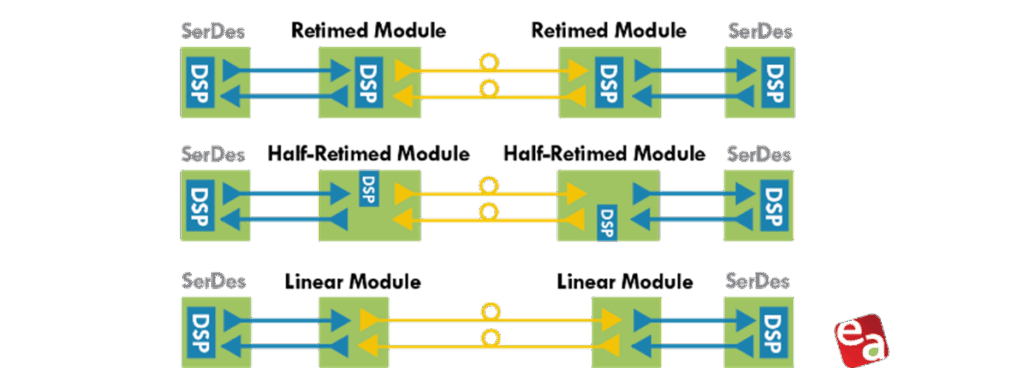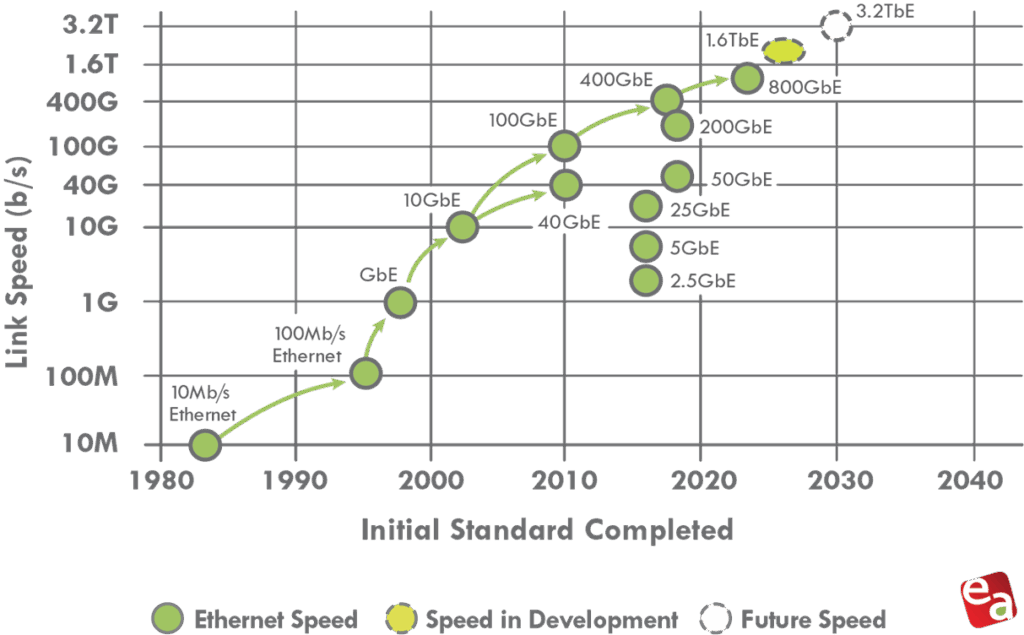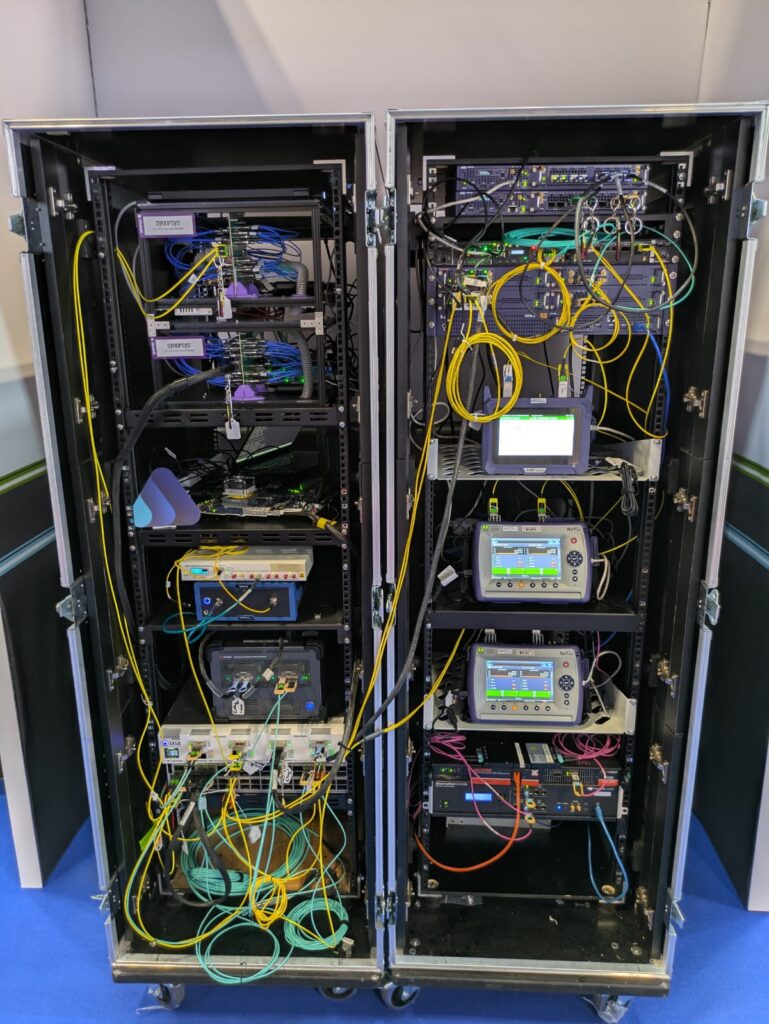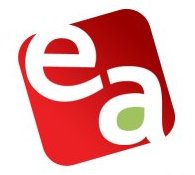ECOC 2025: Interoperability at 800G is Given —Advancing Toward 1.6T
If OFC 2025 was the “proof” 800G is real and ready, ECOC 2025 is where that reality becomes boring—in the best possible way. Multivendor 800G links that just come up. Retimed and unretimed (linear) optics that interoperate cleanly. Electrical I/O marching to 224G-per-lane so 1.6T isn’t hypothetical anymore. The story this year is simple: interoperability is moving from staged demos to muscle memory.
From Headline Demos to Default Behavior
At OFC 2025 in April, the Ethernet Alliance’s showcase put mature 800G solutions on full display and highlighted real progress on Linear Pluggable Optics (LPO). The Alliance also hosted the LPO-MSA groups’ first plugfest, validating multivendor behavior – a powerful combination that turned “linear” from a lab curiosity into something deployable. ECOC 2025 booths then built upon that momentum.
ECOC 2024 foreshadowed this shift: sweeping Ethernet Alliance interop demos from 10G to 800G, proving that 800G links are not just a science project. With another year of plugfests and field work behind the industry, ECOC 2025 showed how routine multivendor 800G operation has become…and that’s real progress.
Retimed vs. Unretimed Optics: What’s Changing (and What Isn’t)

Figure 1: Optical Evolution (image courtesy of the Ethernet Alliance)
- Retimed Digital Signal Processor based (DSP) pluggables: These modules include DSPs that fully retime transmit and receive paths (two DSPs per module), maximizing tolerance to host and channel impairments and keeping jitter under control. They’re the conservative choice when reach, margin, or heterogeneous hosts are in play.
- Unretimed / Linear Optics: By removing the DSP(s) and pushing equalization to the host SerDes, linear optics trade some reach/margin for lower power and latency, which maps nicely to AI fabrics and short-reach data center links. Industry analysis around OFC emphasized that linear approaches are “getting real” in 2025, aided by the new MSA spec and early interop data. ECOC is a checkpoint on how well linear hosts, modules, and management stack up across vendors.
- Half-linear (LRO/TRO) compromises: Some designs retime only one direction (e.g., transmit-retimed, receive-linear) to split the difference on power and performance. Early measurements presented in the ecosystem suggest trade-offs; expect frank conversations on where half-linear makes sense and where it doesn’t.
The Alliance’s 2025 Ethernet Roadmap also captures the state of play: LPO is advancing via an MSA specification – critical context when mixing hosts, optics, and management software from multiple suppliers on tight timelines.
Electrical I/O keeps the 1.6T runway open

Figure 2. 224G remains the key for 1.6T Interconnects (image courtesy of the Ethernet Alliance)
On the electrical side, multivendor interoperability at 112G and 224G CEI interfaces, including backplane and cable use-cases, continues to mature and gain adoption. This is important because 1.6T Ethernet (8×200G) depends on robust 200G-per-lane PHYs and channels from the NIC/ASIC to the module. ECOC continues to mirror and extend those OFC storylines, so expect more 224G cables, backplanes, and lab-to-booth correlations this year.
On the optical protocol side, IEEE 802.3df delivered 800G, and 802.3dj is the workhorse task force bringing 1.6T (with 200G lanes) to life—timelines that frame how quickly interop test suites and plugfests must mature.
Where “IP” Earns its Keep
Interoperability is never only about optics. It’s the end-to-end stack—MAC, PCS, SerDes PHY, and verification—that decides whether links come up fast and stay up under load.
- MAC/PCS & Verification: As speeds scale, clean PCS lane mapping, robust FEC behavior, and thorough VIP-driven testbenches are table stakes for multivendor bring-up, especially when mixing retimed and linear optics across vendors.
- SerDes PHY IP (112G → 224G): Silicon-proven interoperable IP enables seamless integration into SoCs, ensuring that the resulting cluster is inherently interoperable
- Different optical modules, such as EML, DML, and VCSEL, place varying demands on SerDes equalization. An LPO-first SerDes architecture ensures interoperability with all types of optical modules

Ethernet Alliance ECOC 2025 Interoperability Demo
The Bottom Line
Demonstrated interoperability across chips, firmware, optics, and test platforms is now the key factor in architecting next-generation SoCs. If OFC 2025 proved 800G can be multivendor and mature and the LPO spec and plugfest gave linear optics a credible on-ramp, then ECOC 2025 braided those threads together. We watched as links came up quickly, stayed error-free under load, and mixed linear and retimed optics without any surprises. The future isn’t coming; it’s here now, unfolding in real time.
The views and opinions expressed are those of the authors and do not necessarily reflect the official policy or position of the Ethernet Alliance.




